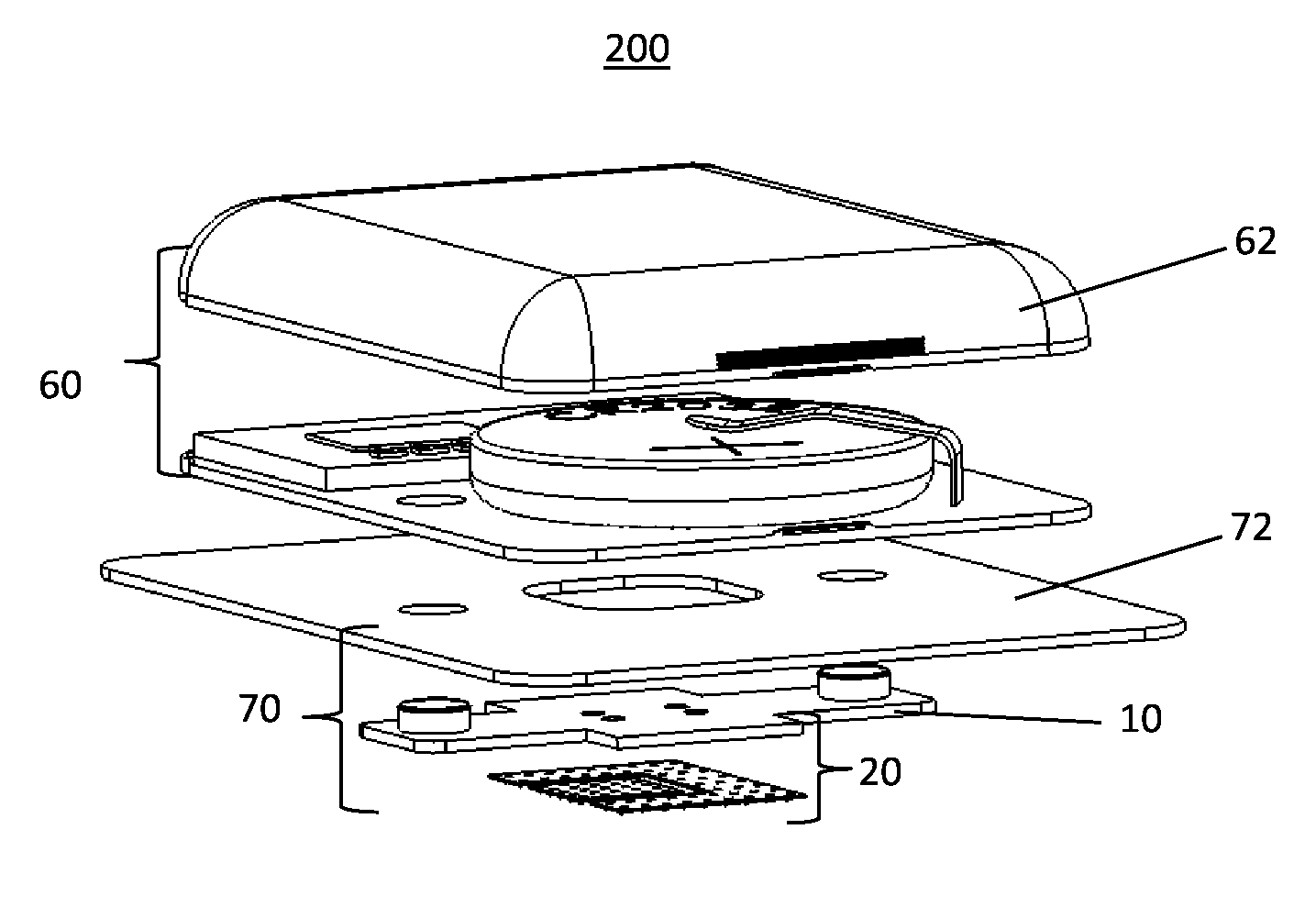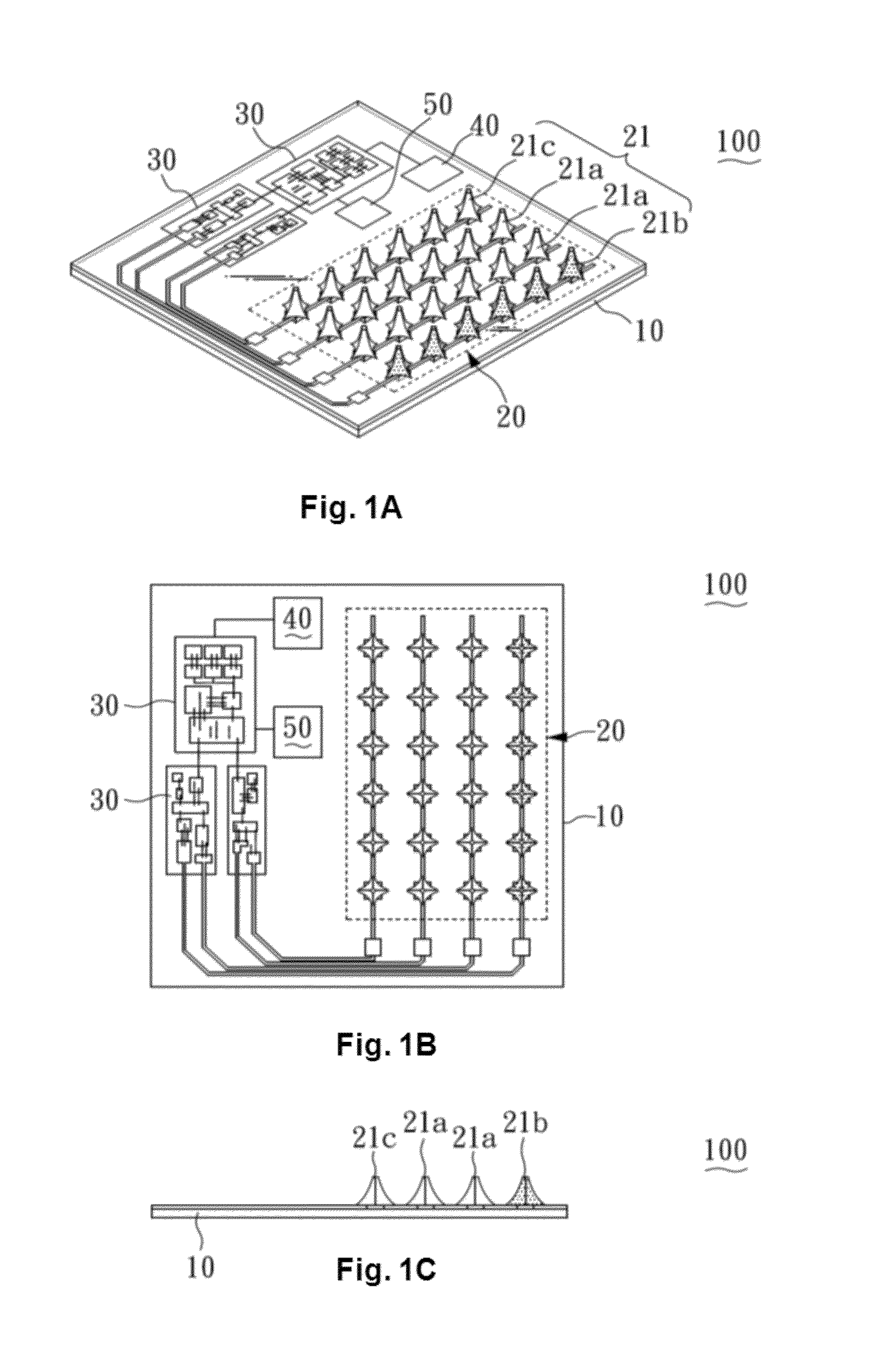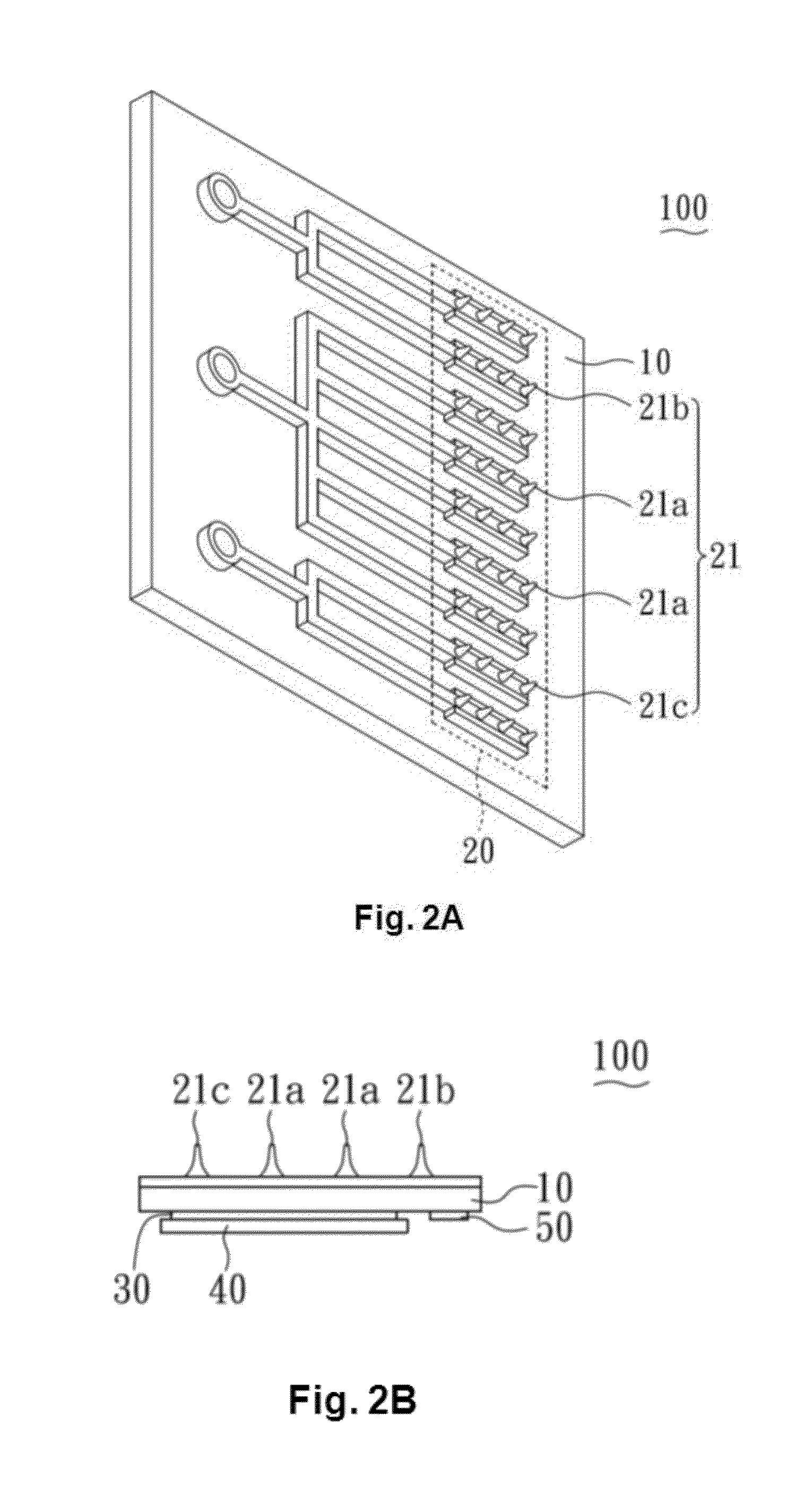Transdermal Sensor
a sensor and transdermal technology, applied in the field of transdermal sensors, can solve the problems of multiple daily measurements, insufficient data on the practical application of isf extraction, slow release into the interstitial fluid for a long period of time, etc., and achieve the effect of reducing the pain of users
- Summary
- Abstract
- Description
- Claims
- Application Information
AI Technical Summary
Benefits of technology
Problems solved by technology
Method used
Image
Examples
example 1
Functionalizing Microneedles with Glucose Oxidase (GOx) and / or Hydroxybutyrate Dehydrogenase (HBHD) on the Surface
Materials and Methods
[0046]The gold surface of the electrode was first modified with 3-mercaptopropionic acid (3-MPA) to form a self-assembled monolayer. And then the electrode was soaked in an aqueous solution containing a selected enzyme (GOx or HBHD) and a matrix solution. The enzyme solution was prepared with GOx or the other selected enzyme with matrix solution in 0.1 M PBS (pH 7.0). The electrode was immersed in the enzyme solution for 24 hours at 4° C. The excess amount of enzymes was washed away with 0.1 M PBS (pH 7.0). Prepare a glucose solution in the concentration between 3.6-5.8 mM (human blood glucose level) and a PBS as blank solution. Immerse the enzyme immobilized gold electrode in to the glucose solution and PBS, and measure the current by cyclic voltammetry.
1.2 Results
[0047]As shown in FIGS. 5A to 5D, the voltage responses depend on the concentration of...
PUM
 Login to View More
Login to View More Abstract
Description
Claims
Application Information
 Login to View More
Login to View More - R&D
- Intellectual Property
- Life Sciences
- Materials
- Tech Scout
- Unparalleled Data Quality
- Higher Quality Content
- 60% Fewer Hallucinations
Browse by: Latest US Patents, China's latest patents, Technical Efficacy Thesaurus, Application Domain, Technology Topic, Popular Technical Reports.
© 2025 PatSnap. All rights reserved.Legal|Privacy policy|Modern Slavery Act Transparency Statement|Sitemap|About US| Contact US: help@patsnap.com



